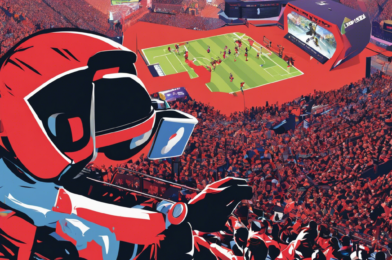Climate change is having a profound impact on our planet, and its effects are increasingly being felt in the world of sports. From extreme weather conditions disrupting events to changing the very nature of outdoor games, global warming is affecting athletes, fans, and the sports industry as a whole.
One of the most visible consequences of climate change for sports has been the disruption of events by extreme weather. In recent years, we have seen tennis tournaments interrupted by smoke from wildfires, football games delayed by torrential rainfall and lightning strikes, and winter sports impacted by unseasonably warm temperatures. For example, the 2022 Winter Olympics in Beijing faced significant challenges, with organizers going to great lengths to manufacture snow and create suitable conditions for outdoor events.
As global temperatures rise, heat is becoming an increasingly concerning issue for athletes and spectators alike. Endurance sports, such as long-distance running and cycling, are particularly affected, with events having to be rescheduled to cooler times of the day or evening, and even then, participants are at risk of heat exhaustion and heatstroke. The same applies to team sports; football, soccer, and baseball players are having to adapt to increasingly hot conditions, impacting performance and recovery.
Additionally, the quality and safety of sports venues are being compromised by climate change. Warmer ocean temperatures are bleaching and killing coral reefs, which provide vital protection for surfing spots worldwide. Rising sea levels are also causing coastal erosion, threatening iconic golf courses and low-lying motor racing tracks.
Water sports are facing challenges due to changing water levels and temperatures. Drought conditions are leading to decreased water availability for water-skiing, wakeboarding, and kayaking, while also impacting the quality and depth of competitive swimming pools. Conversely, extreme flooding events are causing water pollution, creating unsafe conditions for open-water swimming and sailing events.
The winter sports season is also shrinking due to earlier snowmelt and later first snows. Ski resorts are having to rely increasingly on artificial snow, which has a much higher water demand than natural snow production, putting pressure on local water resources.
At the same time, the sports industry is not just a victim of climate change; it is also contributing to the problem. Major sporting events and tournaments often involve significant air travel for athletes and fans, contributing to carbon emissions. Moreover, the construction and operation of sports venues, the manufacturing of sports equipment, and the energy consumption of large-scale events all contribute to the industry’s carbon footprint.
However, there is growing recognition of the need for action, and many sports organizations are now committed to reducing their environmental impact. Initiatives include using renewable energy sources, improving recycling and waste management, and promoting sustainable transportation options for fans and participants. Some sports leagues and organizations are even advocating for policy changes to address climate change and partnering with environmental groups to raise awareness and educate fans about sustainability practices.
Despite the challenges, there is an opportunity for the sports world to lead by example and inspire millions of fans worldwide to take climate action. By adapting to a changing climate and embracing sustainable practices, the sports industry can play a vital role in ensuring that the games we love can continue to be enjoyed by future generations.









